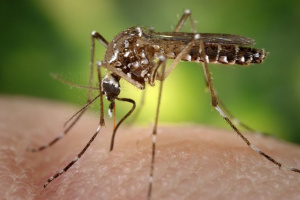New mosquito discovered in Seychelles through genetic sequencing
Species |Author: Salifa Karapetyan Edited by: Betymie Bonnelame | March 15, 2023, Wednesday @ 11:50| 19243 views
n the article, the author describes the larva, male, and female of the mosquito species. (Sanofi/Flickr) Photo License: CC BY-SA 2.0
(Seychelles News Agency) - Wrongly classified mosquito larvae in Seychelles have now been rightly attributed to a new species after an entomologist and his team analysed new samples through the use of genetic sequencing.
According to an article in a scientific report in the International Journal of Entomology published this year, the mosquito, endemic to Aldabra Atoll, now carries the scientific name Aedes (Aedimorphus) suzannae Boussès, carrying the surname of French entomologist Philippe Boussès, who discovered that this is indeed a new species.
The article stated that in 1952, English entomologist George Hopkins first discovered the larva of the species, however, it was wrongly attributed to another - the Aedes (Coetzeemyia) fryeri.
Despite the fact that Hopkins attributed the larva to Aedes (Coetzeemyia) fryeri, he expressed a reservation on the correspondence between larva and adult stating that "although the evidence for the attribution of the larva described to fryeri is not conclusive, it is very strong."
The author of the article published in March 2022, and entomologist Philippe Boussès, wrote that "we know today, this larva was not that of Ae. fryeri, which caused confusion that has lasted to the present day."
He added that the "genetic sequencing of genes from the various stages of development has allowed us to link the adult and larval stages with certainty. We gave this new species the name of Aedes (Aedimorphus) suzannae Boussès."
In the article, the author describes the larva, male, and female of the mosquito species. The two most abundant culicidian mosquito species have females of great morphological similarity so much so that they have been confused until now, however, male genitalia and larval stages are morphologically very different.
Specimens from which the discovery was made, were collected in 2008 in Aldabra and from Assumption Island. In Aldabra, the aquatic stages of development of the newly discovered mosquito species take place in rock holes with brackish water. The larvae were taken from holes in the coral limestone link filled with rainwater.
The adult stages were captured using the US' Centre for Disease Control (CDC) light traps or by aspiration of individuals placed on vertebrates, be it turtles or humans.
Back
